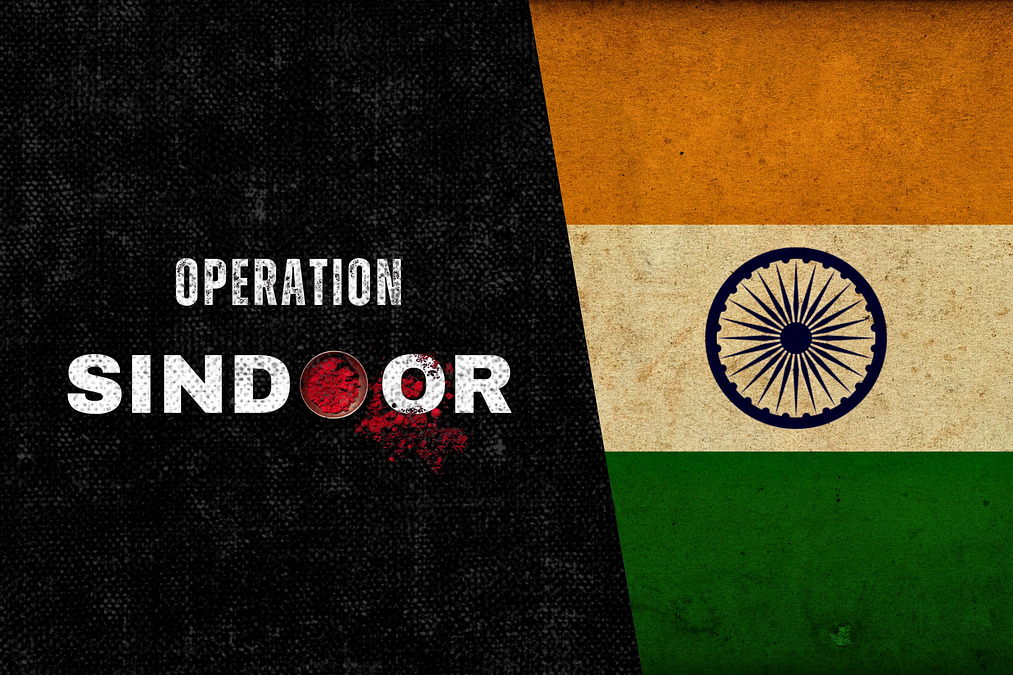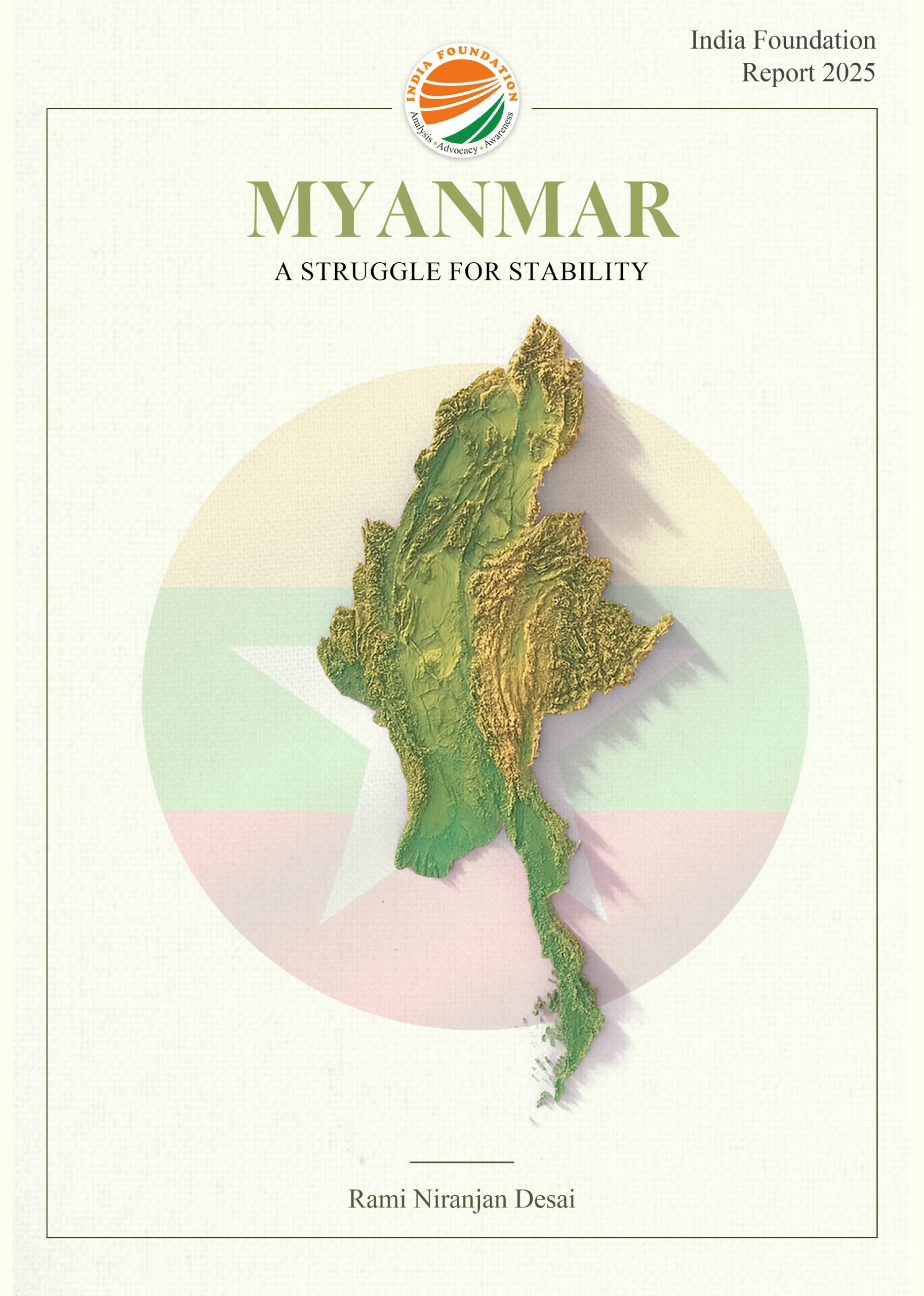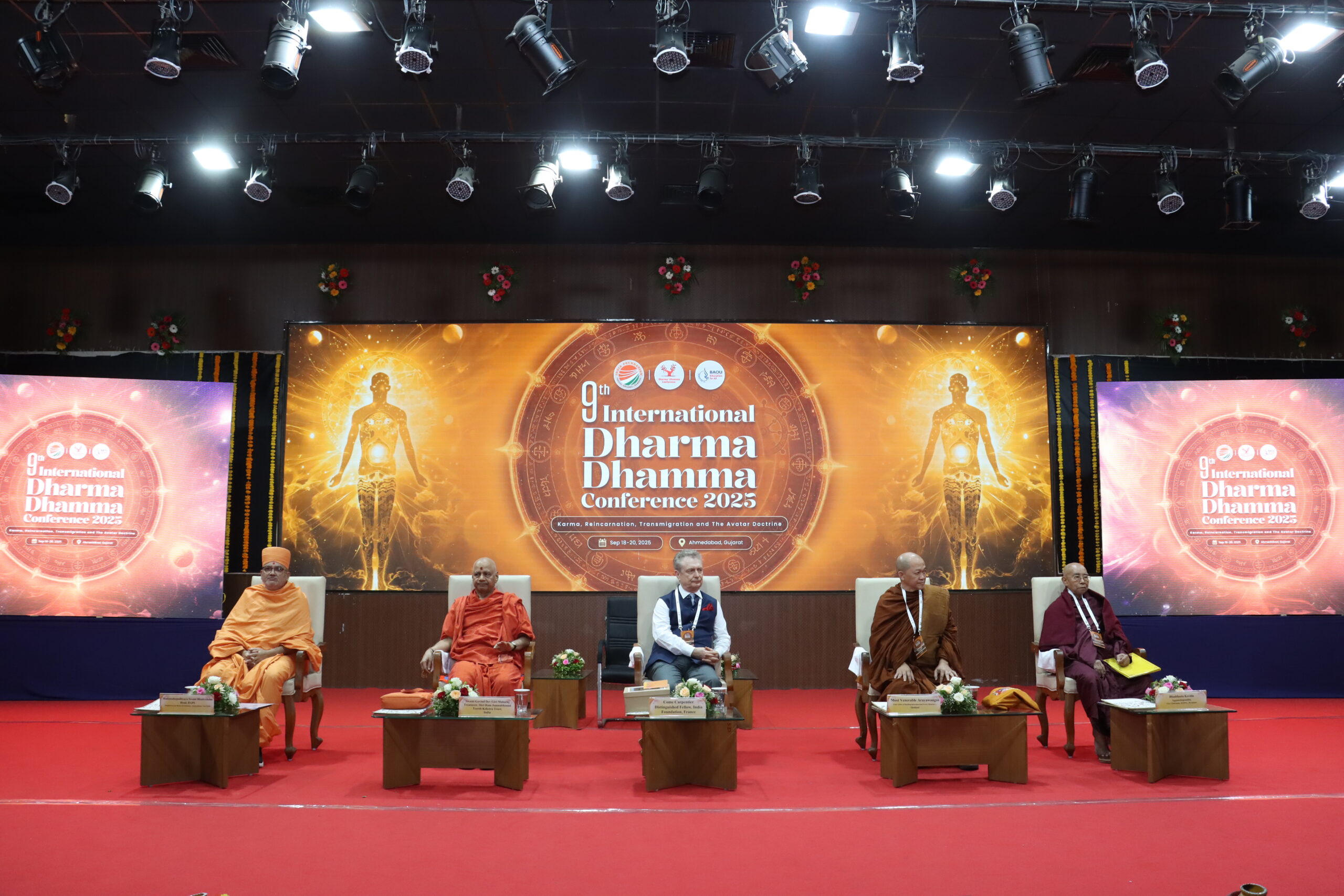The brutal massacre of innocent tourists in Pahalgam on 22 April by five heavily armed terrorists of The Resistance Front (TRF), a proxy of the Pakistan-based Islamist terrorist group Lashkar-e-Taiba (LeT), marked a watershed moment in India’s war against terrorism. The attack, timed to coincide with the visit of U.S. Vice President JD Vance to India, was no coincidence. It was a calculated move intended to internationalise the Kashmir issue and sow communal discord within India. The terrorists and their sponsors failed on both counts. An outraged India rallied together, united in grief, anger, and resolve, and demanded justice for the victims. That justice was delivered on the night of 6-7 May through Operation Sindoor.
A press briefing on 23 April by India’s Foreign Secretary, Shri Vikram Misri, set the stage for what was to follow. He informed the media that the Cabinet Committee on Security (CCS), chaired by the Prime Minister, had convened to assess the evolving security situation. The CCS resolved to bring the perpetrators of the attack to justice and hold their sponsors accountable. As an immediate response, the Indus Waters Treaty of 1960 was suspended, and the Integrated Check Post at Attari was closed. Visas issued under the SAARC Visa Exemption Scheme (SVES) were also cancelled. Additionally, the military, naval, and air advisors at the Pakistani High Commission in New Delhi were declared persona non grata and instructed to leave the country.
Prime Minister Narendra Modi, in a public rally just 48 hours after the deadly Pahalgam attack, assured the nation that justice would be delivered. Switching to English, in his address, he declared, “Today, from the soil of Bihar, I say this to the whole world, India will identify, track and punish every terrorist and their backers.”[1] This was an unambiguous statement of intent. The promised retribution came fifteen days later, through Operation Sindoor. In multiple attacks carried out by the Indian Armed Forces in the early hours of 7 May, nine headquarters, training establishments and other infrastructure of three terrorist groups—Lashkar-e-Taiba, Jaish-e-Mohammad, and Hizbul Mujahideen were destroyed. Five of these targets were in POJK (Pakistan Occupied Jammu & Kashmir) and four in Pakistan’s Punjab province. About 140 terrorists were eliminated in this attack, and the headquarters of the LeT and JeM were destroyed.
Operation Sindoor marked an inflexion point in India’s response to cross-border terrorism. The hesitations of the past in confronting a neighbour that had long employed terrorism as a tool of state policy were gone. The assumption that nuclear weapons would shield such actions from a robust Indian response no longer held true. The doctrine of ‘strategic restraint’ had been decisively set aside, signalling a new assertiveness in India’s national security policy.
Strategic Restraint: the Background
‘Strategic Restraint’ characterised India’s approach to terrorism since the early 1990s. It was a defensive strategy aimed at preventing acts of terrorism. To that end, in the hinterland, a specialised counter-insurgency force, the Rashtriya Rifles, was formed from within the Indian Army to address the escalating insurgency in Jammu and Kashmir. The Rashtriya Rifles quickly established dominance, eliminating a significant number of terrorists and containing violence levels. However, as the losses suffered by terrorist groups were rapidly compensated through infiltration from across the LoC, the number of terrorists operating in J&K did not decline.
In the early 2000s, a fence was constructed along the International Border (IB) and the Line of Control (LoC) to check infiltration. The BSF was tasked with actively guarding the fence along the IB, while the Army was responsible for securing the LoC. These measures contributed to a reduction in Pakistan-sponsored cross-border infiltration. However, as Pakistan continued to support the terrorists, such infiltration could not be entirely eliminated.
The policy of strategic restraint did not envisage the use of force to deter the Pakistani military. The nuclear tests conducted by both India and Pakistan in 1998 provided Pakistan with the leverage to continue supporting cross-border terrorism under a nuclear overhang. Within India’s security establishment, there was genuine concern that military action against a nuclear-armed Pakistan could provoke a potential nuclear response. Ambiguous yet ominous statements from Pakistan’s political and military leadership, suggesting the possibility of using nuclear weapons to counter an Indian offensive, further reinforced this belief. Consequently, when Pakistani forces infiltrated the Kargil heights in early 1999, India intentionally restricted its military operations to its side of the LoC, signalling a cautious yet calculated employment of military power under the shadow of nuclear deterrence.
For the Pakistani establishment, cross-border terrorism represented a low-cost option to continue to bleed India by a thousand cuts—a policy first articulated by Pakistan’s Prime Minister ZA Bhutto after the country’s defeat in the 1971 war. For India, maintaining a significant security presence in Jammu and Kashmir to control levels of violence in the state imposed substantial costs in human and material resources. Despite the increased security presence, acts of violence continued, albeit at manageable levels.
The Pakistani state and its military were not impacted by the Indian response, which was directed at preventing infiltration and operating against terrorists in the hinterland. This allowed the Pakistani state to operate with impunity and claim deniability over the actions of the terrorist groups. Consequently, a significant number of high-profile terrorist attacks occurred in India during the first decade of the new millennium. These included an attack on India’s Parliament in 2001 by five Jaish-e-Mohammed terrorists, the 2002 Akshardham Temple attack by Lashkar-e-Taiba (LeT), the 2005 and 2008 Delhi bombings, and the 2008 Mumbai attacks, which were also carried out by the LeT. Predictably, Pakistan denied having a role in these attacks, claiming them to be the handiwork of “freedom fighters”. India’s ‘Strategic Restraint’ policy thus failed to deter Pakistan from sponsoring such attacks. A policy shift was necessary.
When the NDA government came to power with a substantial majority in 2014, it initially aimed to improve relations with Pakistan. Prime Minister Modi invited the Pakistani premier to his swearing-in ceremony on 26 May 2014. As the year drew to a close, in a move that surprised most observers, Prime Minister Modi, while returning from Afghanistan, made an unscheduled stop in Lahore to attend the wedding of Nawaz Sharif’s granddaughter on 25 December.[2] This was intended as an ice-breaker, but the bonhomie lasted only a few days. Just a week later, on New Year’s Day 2016, during the night of 1-2 January 2016, Pakistan-backed terrorists attacked the Indian Air Force (IAF) base at Pathankot. The terrorists were neutralised and prevented from causing damage to the IAF’s strategic assets, but seven defence personnel lost their lives and 25 were injured.[3] The brief period of bonhomie was over.
The Shift to Deterrence
Despite this grave provocation, India continued with its strategic restraint policy. The first glimmer of a policy change in the offing came about following the ambush of an Indian Army convoy in Manipur on 9 June 2015, in which 18 soldiers were killed. The terrorist group NSCN-K claimed responsibility for this outrage. A few days later, in a covert operation code-named “Operation Hot Pursuit”, India’s Special Forces targeted the training facilities and camps linked to NSCN-K a few kilometres inside Myanmar.[4] The success of this operation drew wide applause, but the Pakistani reaction was dismissive. Responding to the then Minister of State for Information and Broadcasting Rajyavardhan Singh Rathore’s remarks that military action in Myanmar to retaliate against rebels who killed 18 soldiers in Manipur was a message to other countries, Pakistan’s interior minister Nisar Ali Khan stated, “Pakistan is not like Myanmar” and warned that the threats from across the border would not intimidate Pakistan.[5] He and other leaders in Pakistan also obliquely threatened India with nuclear retaliation should India attempt a similar operation against Pakistan.
A terrorist attack on an army post in Uri on 18 September 2016 marked a pivotal moment in India’s response to incidents of terrorism emanating from Pakistan. In this attack, claimed by Jaish-e-Mohammed, a Pakistan-based terrorist group, 19 Indian soldiers lost their lives. Responding to the incident, Prime Minister Modi stated, “We strongly condemn the cowardly terror attack in Uri. I assure the nation that those behind this despicable attack will not go unpunished.” Ten days later, on the night of 28-29 October, the Indian Army launched a surgical strike on seven launch pads located a few kilometres across the LoC, in which a significant number of terrorists were eliminated.[6] During a briefing for the media the following afternoon, the Indian Army’s Director General of Military Operations, Lt Gen Ranbir Singh, provided details of the strikes. “Significant casualties have been caused to the terrorists and those who are trying to support them”, he stated. “We do not have any plans for the continuation of further operations. However, the Indian armed forces are fully prepared for any contingency,”[7] he added.
The surgical strikes represented a significant shift in India’s approach to cross-border terrorism, suggesting that the ‘strategic restraint’ policy was being replaced by deterrence. For the first time, India had demonstrated an intent to strike overtly at terrorist targets across the LoC and, in the process, had also called out the Pakistani nuclear bluff.
While Pakistan opted not to respond to the surgical strikes, it continued to support terrorist groups operating within J&K. Consequently, there was no significant change in the number of terrorist acts of violence, which remained relatively consistent over the subsequent three years.[8] However, there were no targeted acts of violence involving casualties significant enough to impact a large number of people. Also, no terrorist acts took place outside of Jammu and Kashmir.
That changed in 2019, when, on 14 February, in Pulwama, a bustling town about 25 kilometres south of Srinagar, a suicide bomber drove his vehicle into a bus that was part of a CRPF convoy, resulting in the deaths of 40 CRPF personnel. The suicide bomber was identified as Jaish-e-Mohammad’s Adil Ahmed Dar.[9] Two weeks later, India retaliated by attacking the Jaish-e-Mohammad headquarters in Balakot on 26 February.
The Balakot air strike was again a departure from the strategic restraint policy. IAF jets flew across Pakistani airspace and hit a JeM facility in Balakote, Khyber Pakhtunkhwa, approximately 80 km deep inside Pakistan. The facility, located atop a forest hilltop about 20 km from Balakot, was run by Muhammad Yusuf Azhar, the brother-in-law of Masoor Azhar, a wanted terrorist. It was reportedly a training camp, with a capacity of about 600, training terrorists in the use of weapons and explosives. Indian sources claimed that the attack killed between 200 and 350 terrorists who were in the buildings at that time. Pakistan, predictably, denied any loss of life, but retaliated thereafter with an air strike on an Indian forward post. In the process, an Indian MiG-21 fighter jet piloted by Wing Commander Abhinandan shot down a returning Pakistani F-16 in aerial combat. However, as his jet was also hit, he ejected over Pakistan-Occupied Kashmir and was captured by the Pakistani military. Two days later, he was released, ending the brief conflagration.
The Balakot air strike was significant for two reasons. First, it marked India’s first air strike on Pakistani territory since the 1971 war—and notably, in an undisputed area—signalling once again a shift away from its traditional posture of “strategic restraint”. Second, Pakistan’s swift release of the captured Indian Air Force pilot indicated a reluctance to escalate into full-scale conflict, deviating from its usual strategy of leveraging the threat of nuclear confrontation to prompt Indian caution and international intervention, particularly from the United States. India called Pakistan’s bluff, and Pakistan blinked. As Christine Fair put it, “Pakistan has nuclear weapons it cannot use because, while India will suffer tragic losses from Pakistani launches, Pakistan will cease to exist as a geopolitical entity after India responds in kind.”[10]
The Balakot air strike established a new normal in India’s approach to addressing cross-border terrorism. The use of air power, previously seen as a significant escalation, was no longer taboo. Through this strike, India affirmed its right to defend itself by targeting terrorist objectives wherever they may be.
The Jammu and Kashmir Reorganisation Act of August 2019, which followed a few months later, was also a significant step taken to restore normalcy in Jammu and Kashmir and break the linkages Pakistan had cultivated with various groups in the state. The Act revoked the state’s special status and divided it into two Union Territories: Jammu and Kashmir and Ladakh, with both coming under the President’s rule. During the following five years, until elections were held in September 2024, the Union Territory of Jammu and Kashmir witnessed a dramatic decline in casualty figures.[11] In the Kashmir Valley, the significant improvement in the security situation resulted in zero incidents of hartals, shutdowns, or stone-pelting demonstrations, which had been common earlier. Terrorist attacks in the Kashmir Division fell to 126 in 2021, then to 103 and 29 in the following two years, eventually reducing to single digits in 2024.[12] The number of tourists visiting the valley rose to record levels, with over three million visiting in 2024.[13]
Pakistan’s declining ability to incite separatism in Jammu and Kashmir was likely the underlying cause of the terrorist attack in Pahalgam on 22 April. The cold-blooded murder of 26 tourists, after identifying their religious identity, appeared to be a desperate attempt by Pakistan to maintain its relevance in the Union Territory. Within minutes of the Pahalgam attack, the TRF claimed responsibility.
The Doctrine of Compellance
In his address to a rally in Bihar, Prime Minister Modi made it clear that terrorists and their sponsors would face the wrath of the Indian state. Fearing a severe backlash from India and the international community, TRF, likely under Pakistani prodding, swiftly backtracked on its claim, but the evidence against it was overwhelming. As Prime Minister Modi had made it clear that India would respond strongly, Pakistan heightened its security nationwide. Nevertheless, the scale and ferocity of the Indian response took the Pakistan army and political establishment by surprise.
‘Operation Sindoor’ was conceived to punish the perpetrators and planners of terror and to destroy the terror infrastructure across the border. Accordingly, on the night of 6-7 May, the Indian Armed Forces launched coordinated and accurate missile strikes on nine terrorist bases—four located in Pakistan (including the headquarters of LeT and Jaish-e-Mohammed (JeM) in Muridke and Bahawalpur, respectively), and five in Pakistan-occupied Jammu and Kashmir (including Muzaffarabad and Kotli). All the terrorist bases struck were key command centres of the LeT and JeM.
What was significant about “Operation Sindoor” was Pakistan’s failure to protect its airspace, despite deploying the much-vaunted Chinese-made equipment: the long-range HQ-9 and the medium-range HQ-16 series of SAMs (Surface to Air Missiles). India successfully destroyed the terrorist camps in under 30 minutes, with none of its missiles being intercepted by the Pakistani air defence system. As India did not wish to escalate the conflict, the Indian Army’s DGMO immediately informed his Pakistani counterpart of India’s strike, stating that India had not attacked any Pakistani military target and that any response by Pakistan to Indian military targets would provoke a suitable response.
Pakistan, however, chose to escalate the conflict, and over the next 72 hours, attacked Indian cities and military bases using drones and missiles. India’s air defence system successfully intercepted all incoming threats, resulting in minimal loss of life or property. In retaliation for Pakistani aggression, India deployed kamikaze drones to neutralise Pakistan’s air defence capabilities, and Lahore’s air defence system was disabled. On the night of 9-10 May, India intensified its counter-offensive. Within three hours, 11 military installations, including Noor Khan, Rafiqui, Murid, Sukkur, Sialkot, Pasrue, Chunian, Sargodha, Skardu, Bholari, and Jacocabad, were struck, causing extensive damage. Pakistan’s air capability thereafter stood seriously degraded, forcing it to seek a ceasefire. This was a significant demonstration of India’s military and strategic power.[14]
Through a combination of kinetic and non-kinetic measures, remarkable political leadership, and skilled diplomatic manoeuvres, a new security doctrine has emerged, which I call the doctrine of compellence. The strategic restraint observed from the 1980s was replaced by deterrence in 2016, as exemplified by the surgical and Balakot air strikes. Now, Operation Sindoor has set the stage for a comprehensive strategy to compel Pakistan to desist from supporting terrorist attacks originating from its soil. In the future, the policy’s kinetic impact will focus on the Pakistan military. This was made clear by the Prime Minister in his address to the nation on 12 May, where he stated that Operation Sindoor has established a new benchmark in India’s fight against terrorism and has introduced a new parameter and a new normal. Three significant points emerged from the Prime Minister’s address. One, India will strike at every location from which the roots of terrorism emerge. Two, India will not tolerate any nuclear blackmail, and three, India will not differentiate between the government sponsoring terrorism and the masterminds of terrorism.[15]
The compellence doctrine establishes new paradigms for deterrence and response. Henceforth, all acts of terror against India will trigger a clear, forceful, and coordinated whole-of-government response, encompassing both kinetic and non-kinetic measures. India will no longer distinguish between terrorists and those who sponsor them—both will be held equally accountable and targeted in its responses. All of Pakistan’s territory is now within the scope of potential Indian action, which will be carried out through coordinated tri-service operations. Nuclear threats from Pakistan will not deter India from taking firm and resolute measures to safeguard its national security and respond decisively to cross-border terrorism. As part of reframing its response strategy, India has decoupled the Kashmir issue from its strike narrative and will act solely through the lens of counter-terrorism. In doing so, India will operate unilaterally and will not seek global approval for its actions. Through this doctrine, India has redefined the rules of engagement and established new red lines.[16]
The non-kinetic measures designed to compel Pakistan to abjure terrorism target the Pakistani state. Among these, linking cooperation on sharing the waters of the Indus River and its tributaries to Pakistan abjuring terrorism will have the most significant impact, as it instils uncertainty in Pakistan’s agricultural sector. “Blood and water cannot flow together” is not merely a slogan but a reality Pakistan must now confront. This will severely affect Pakistan’s Punjab province, which holds considerable influence over the country’s polity. This province relies heavily on the waters of the Jhelum and Chenab Rivers and is, consequently, the most severely impacted by Indian actions upstream of these rivers.
The other significant aspect of the non-kinetic response is that India’s engagement with Pakistan on any issue will be conditional, requiring Pakistan to dismantle its terror apparatus. There is no change to the Indian stance that talks and terrorism cannot go together. Discussions on the Kashmir issue will be restricted to the return of the territory illegally occupied by Pakistan, which includes Gilgit-Baltistan and the region of Mirpur-Muzaffarabad.
The Challenges Ahead
While a new doctrine has been enunciated, future challenges revolve around its execution. For instance, what will be the Indian response if Pakistan-based terrorists attack a military convoy, resulting in the loss of a couple of soldiers’ lives? Will the response match the scale of Operation Sindoor? If not, what will be India’s level of tolerance towards Pakistani-sponsored terrorist attacks?
How will India respond to instances of cross-border infiltration and violations of Indian airspace by drones operated from Pakistan? There would be a need for greater clarity on these issues. If the policy is to be zero tolerance, then India must be prepared to respond firmly to every act of terror, even if such terrorist acts are thwarted and cause no damage. In any case, each act of Pakistan-sponsored terrorism must be responded to in a manner that imposes heavy costs on the sponsors.
There is a view, especially among some former Indian diplomats, that India’s stated policy of no talks with Pakistan till it forsakes terrorism is counter-productive. The view expressed is that any meaningful progress can occur only through talks. However, talks have yielded little so far, and there is nothing to suggest that Pakistan will be more amenable to forgoing terrorism if negotiations are resumed. A more positive outcome could be obtained by making Pakistan bear the brunt of its policies. Hence, combining non-kinetic and kinetic measures to deter Pakistan may serve India’s interests better. The challenge is to keep the pressure on Pakistan, without getting derailed by internal voices seeking peace at any cost. If sufficiently high costs can be imposed on Pakistan, that could elicit a behaviour change.
For the policy to be impactful, India must have a decisive military edge over Pakistan. This edge must be maintained at all times.
Conclusion
India-Pakistan relations remain at a historic low, with little prospect of improvement in the foreseeable future. India is focused on its long-term developmental trajectory, aiming to become a USD 30 trillion economy by 2047. It cannot afford to be distracted by a belligerent neighbour that continues to pursue a policy of bleeding India through a thousand cuts.
Decades of experience have demonstrated that Pakistan is unlikely to alter its hostility unless compelled to do so through the imposition of meaningful costs. In this context, the new strategic framework initiated through Operation Sindoor represents a pivotal shift. It offers India a credible opportunity to reshape Pakistan’s calculus and compel a reconsideration of its priorities.
The doctrine of compellence—a mix of kinetic and non-kinetic instruments—provides the most viable path towards enforcing a peace that Pakistan cannot ignore. In the current environment, a forced peace—rather than an imagined reconciliation—is the most achievable outcome.
Author Brief Bio: Maj. Gen. Dhruv C. Katoch is Editor, India Foundation Journal and Director, India Foundation
References:
[1] India Will Identify, Trace, Punish Every Terrorist and Their Backers: PM Modi –. 24 Apr. 2025, www.newsonair.gov.in/india-will-identify-trace-punish-every-terrorist-their-backers-pm-modi.
[2] Rishi, Shubir. “Modi Makes Surprise Visit to Pakistan, Attends Nawaz’s Grand-daughter’s Wedding.” Rediff, 25 Dec. 2015, www.rediff.com/news/report/surprise-modi-to-drop-in-for-nawazs-birthday-in-lahore/20151225.htm.
[3] Terrorist Attack at Air Force Station Pathankot. www.pib.gov.in/newsite/PrintRelease.aspx?relid=136914.
[4] Dhingra, Ashok K. “Operation Hot Pursuit: The Indian Army’s Surgical Strikes Into Myanmar.” Fair Observer, 16 May 2025,
[5] IndiaToday.In. “Pakistan Is Not Myanmar: Pakistan Minister to India.” India Today, 10 June 2015, www.indiatoday.in/india/story/pakistan-is-not-myanmar-nisar-ali-khan-manipur-ambush-256792-2015-06-10.
[6] Correspondent, Ht. “India’s Surgical Strikes Across LoC: Full Statement by DGMO Lt Gen Ranbir Singh | Latest News India – Hindustan Times.” Hindustan Times, 29 Sept. 2016, www.hindustantimes.com/india-news/india-s-surgical-strikes-across-loc-full-statement-by-dgmo-lt-gen-ranbir-singh/story-Q5yrp0gjvxKPGazDzAnVsM.html.
[7] “Transcript of Joint Briefing by MEA and MoD (September 29, 2016).” Ministry of External Affairs, Government of India,
[8] List of Terrorist Killed in India | South Asian Terrorism Portal. www.satp.org/datasheet-terrorist-attack/major-incidents/india.
[9] Haidar, Suhasini. “Latest Pulwama Attack 2019 News, Photos, Latest News Headlines About Pulwama Attack 2019-The Hindu.” The Hindu, www.thehindu.com/topic/pulwama-attack-2019.
[10] Fair, C. Christine. “Pakistan’s Pulwama Game Plan: It Is Obsessed With Changing Maps in Kashmir and Retarding India’s Global Ri.” Times of India Voices, 25 Feb. 2019, timesofindia.indiatimes.com/blogs/toi-edit-page/pakistans-pulwama-game-plan-it-is-obsessed-with-changing-maps-in-kashmir-and-retarding-indias-global-rise.
[11] “Transcript of Joint Briefing by MEA and MoD (September 29, 2016).” Ministry of External Affairs, Government of India,
[12] Ramachandran, Sudha. “Jammu and Kashmir: Five Years After the Abrogation of Its Autonomy”
https://thediplomat.com/2024/08/jammu-and-kashmir-five-years-after-the-abrogation-of-its-autonomy/
[13] KL News Network. “Kashmir Sees 9.2 Million Tourists in 6 Years, 1.4 Lakh From Abroad.” Kashmir Life, 20 May 2025, kashmirlife.net/kashmir-sees-9-2-million-tourists-in-6-years-1-4-lakh-from-abroad-391550.
[14] Operation SINDOOR: India’s Strategic Clarity and Calculated Force. www.pib.gov.in/PressReleasePage.aspx?PRID=2128748#:~:text=The%20results%20of%20Operation%20SINDOOR,Mohammed%2C%20and%20Hizbul%20Mujahideen%20facilities.
[15] English Rendering of PM’s Address to the Nation. www.pib.gov.in/PressReleasePage.aspx?PRID=2128268#:~:text=Our%20brave%20soldiers%20displayed%20immense,every%20daughter%20of%20the%20country.
[16] Operation SINDOOR: India’s Strategic Clarity and Calculated Force. www.pib.gov.in/PressReleasePage.aspx?PRID=2128748#:~:text=The%20results%20of%20Operation%20SINDOOR,Mohammed%2C%20and%20Hizbul%20Mujahideen%20facilities.




